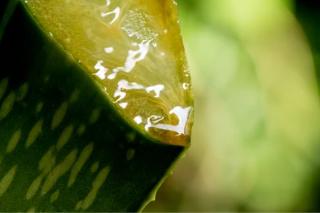9, 10-anthraquinone (AQ), a quinone compound, is used as a raw material for synthesizing disperse dyes, acid dyes, reduction dyes, and reactive dyes. AQ is also used in the paper industry to increase the rate of delignification and shorten paper-making time, and as a bird repellent due to its bird avoidance effect. Recently, trace amounts of the contaminant 9,10-anthraquinone have been found in tea, which may have some negative health effects on consumers, mainly carcinogenic effects. Due to the diversity of tea processing and the geographical nature of tea production, the exceedance of anthraquinone contaminants in tea is not targeted, causing some interference in the tracing and indicating the source of anthraquinone contaminants. The cultivation, processing, packaging, transportation, and storage of tea may cause the exceedance of tea contaminants.

Anthracene may settle into the soil and be converted into anthraquinone, causing soil and water pollution in tea plantations, or it may be directly converted into anthraquinone in tea trees. Due to its carcinogenic properties, the EU limit for anthraquinone in tea is set at 0.02 mg/kg. As a recognized leader in tea testing, Lifeasible can help you develop the best tea anthraquinone testing solution to comply with local, national, and international regulations.
Tea is rich in tea polyphenols and pigment compounds compared to other foods of plant origin, and the composition of tea products processed by different processes varies greatly. Due to the specificity of this tea matrix, it can cause interference when performing anthraquinone residue analysis and detection. Our experts are committed to developing more sensitive and efficient methods for detecting anthraquinone in tea. Our team of experienced scientists will work closely with you to find simple and reliable analytical solutions to identify tea anthraquinone.
We offer customized solid-phase extraction GC-MS solutions for detecting anthraquinone in tea fresh leaves, dried tea, and tea broth. The specific process is as follows:
(1) Sample extraction with ethyl acetate and hexane.
(2) Sample trans conjugation, cleanup by ProElut TPC.
(3) GC-EI-QqQ-MS/MS analysis.
Our customized solution for detecting the anthraquinone can achieve accurate qualitative quantification with a detection limit of 6 μg/kg and a quantification limit of 20 μg/kg, which is consistent with the limits given by the EU. The exceptionally low, simple pre-treatment steps, high recovery, good method stability, and excellent clean-up are particularly suitable for anthraquinone detection in tea exported to Europe.
Lifeasible aims to provide an HPLC-PDA, GC/MS, and QuEChERS based method for analyzing natural and artificial anthraquinone contamination in tea. The method is simple and efficient in operation. It can meet the requirements for determining tea anthraquinone residue limits in experiments in terms of recovery, detection limit, and precision. Our efficient customer-focused service will guarantee the quality of your results and save you time and money. If you are interested in our solutions, please contact us for technical consultation and quotation.
Reference
Lifeasible has established a one-stop service platform for plants. In addition to obtaining customized solutions for plant genetic engineering, customers can also conduct follow-up analysis and research on plants through our analysis platform. The analytical services we provide include but are not limited to the following:
Get Latest Lifeasible News and Updates Directly to Your Inbox
Adaptive Evolutionary Mechanism of Plants
February 28, 2025
Unraveling Cotton Development: Insights from Multi-Omics Studies
February 27, 2025